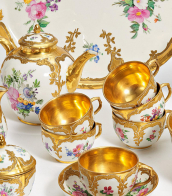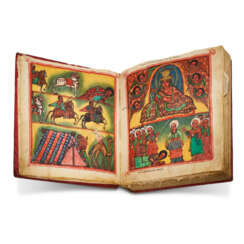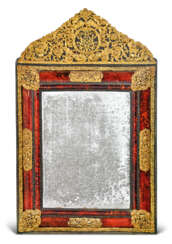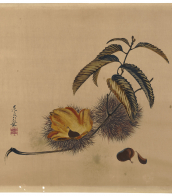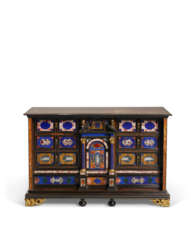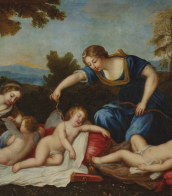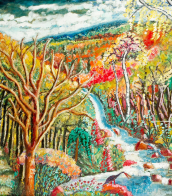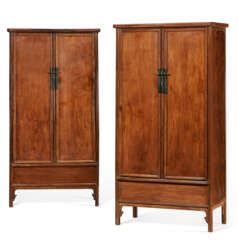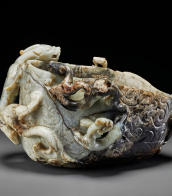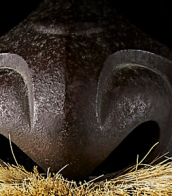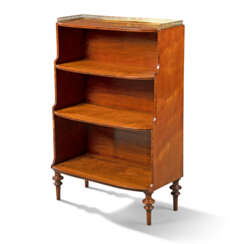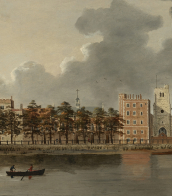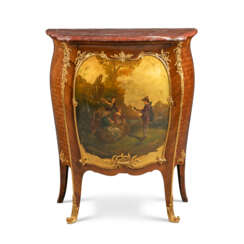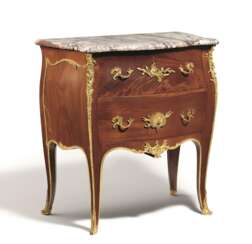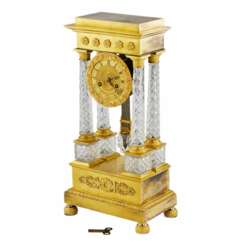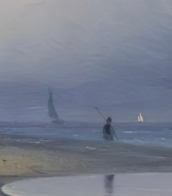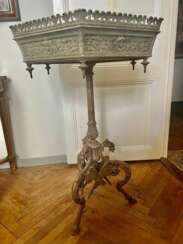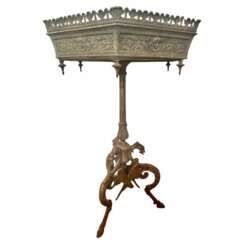535 Items by auctions and galleries:
severe style
Lot 606 PAIRE DE MIROIRS DE STYLE BAROQUE
Hubert de Givenchy - Collectionneur: Hôtel d'Orrouer I-II et Manoir du Jonchet | Day Sales 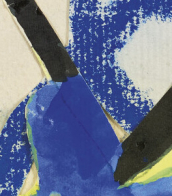

CHRISTIE'S
Hubert de Givenchy - Collectionneur: Hôtel d'Orrouer I-II et Manoir du Jonchet | Day Sales
Date: 17.06.2022 10:30 UTC +02:00
Number of lots in the catalog: 689
Lot 2245 JAEGER-LECOULTRE. AN EXCEPTIONAL AND EXTREMELY RARE LIMITED EDITION WOOD MARQUETRY AND YELLOW SAPPHIRE-SET ATMOS CLOCK WITH REGULATOR STYLE, 24 HOUR DISPLAY, MONTH, MOON PHASES AND MOTHER-OF-PEARL DIAL
Jaeger-LeCoultre
The Champion Collection Part VI: The Finest Watchmaking 

CHRISTIE'S
The Champion Collection Part VI: The Finest Watchmaking
Date: 27.11.2022 19:00 UTC +08:00
Number of lots in the catalog: 82
Lot 262 A LOUIS XV-STYLE ORMOLU-MOUNTED MAHOGANY AND KINGWOOD PARQUETRY GUERIDON
An Opulent Aesthetic: An Important Private Collection from an English Country House 

CHRISTIE'S
An Opulent Aesthetic: An Important Private Collection from an English Country House
Date: 09.02.2023 10:30 UTC +01:00
Number of lots in the catalog: 265
Lot 199 A LOUIS XV-STYLE ORMOLU-MOUNTED KINGWOOD, PARQUETRY AND VERNIS MARTIN MEUBLE D'APPUI
François Linke (1855 - 1946) 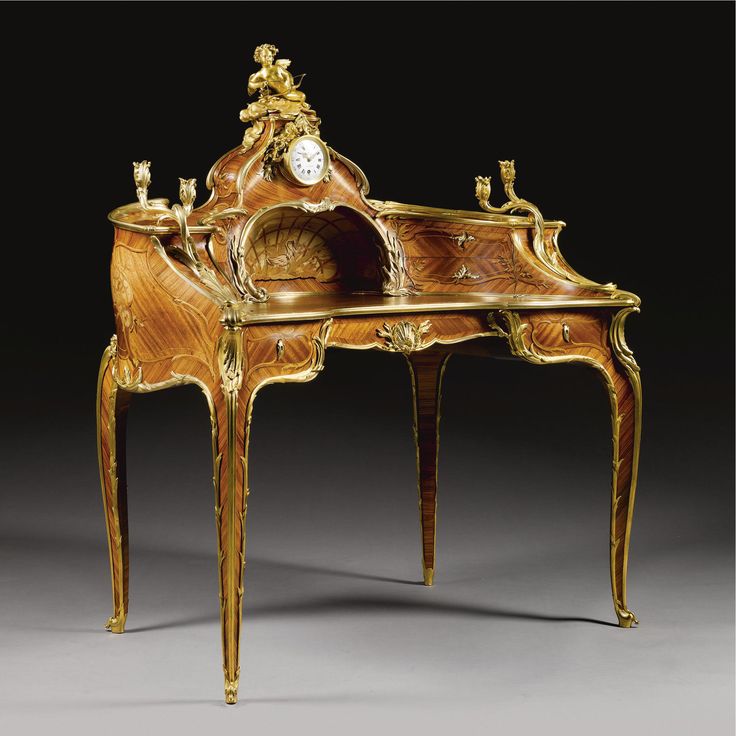 An Opulent Aesthetic: An Important Private Collection from an English Country House
An Opulent Aesthetic: An Important Private Collection from an English Country House 

François Linke
17.06.1855 - 30.05.1946
Germany, France, Czech Republic

CHRISTIE'S
An Opulent Aesthetic: An Important Private Collection from an English Country House
Date: 09.02.2023 10:30 UTC +01:00
Number of lots in the catalog: 265
Lot 507 François Linke. CHEST OF DRAWERS STYLE LOUIS XV.
François Linke (1855 - 1946)  513. LIVE Auction | Works of Art & Art Nouveau
513. LIVE Auction | Works of Art & Art Nouveau 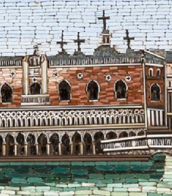

François Linke
17.06.1855 - 30.05.1946
Germany, France, Czech Republic

VAN HAM Kunstauktionen GmbH
513. LIVE Auction | Works of Art & Art Nouveau
Date: 16.05.2024 18:00 UTC +02:00
Number of lots in the catalog: 372


